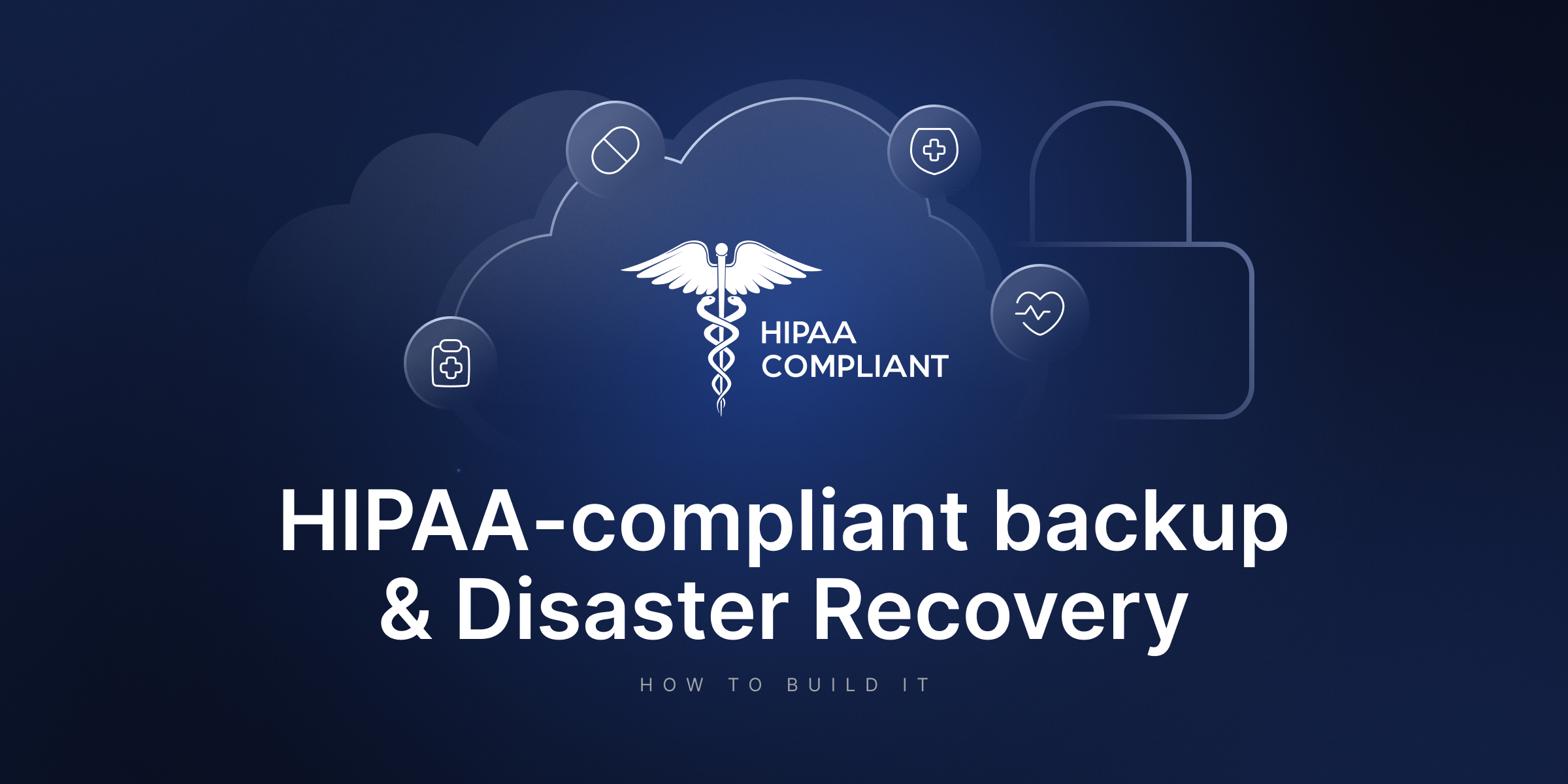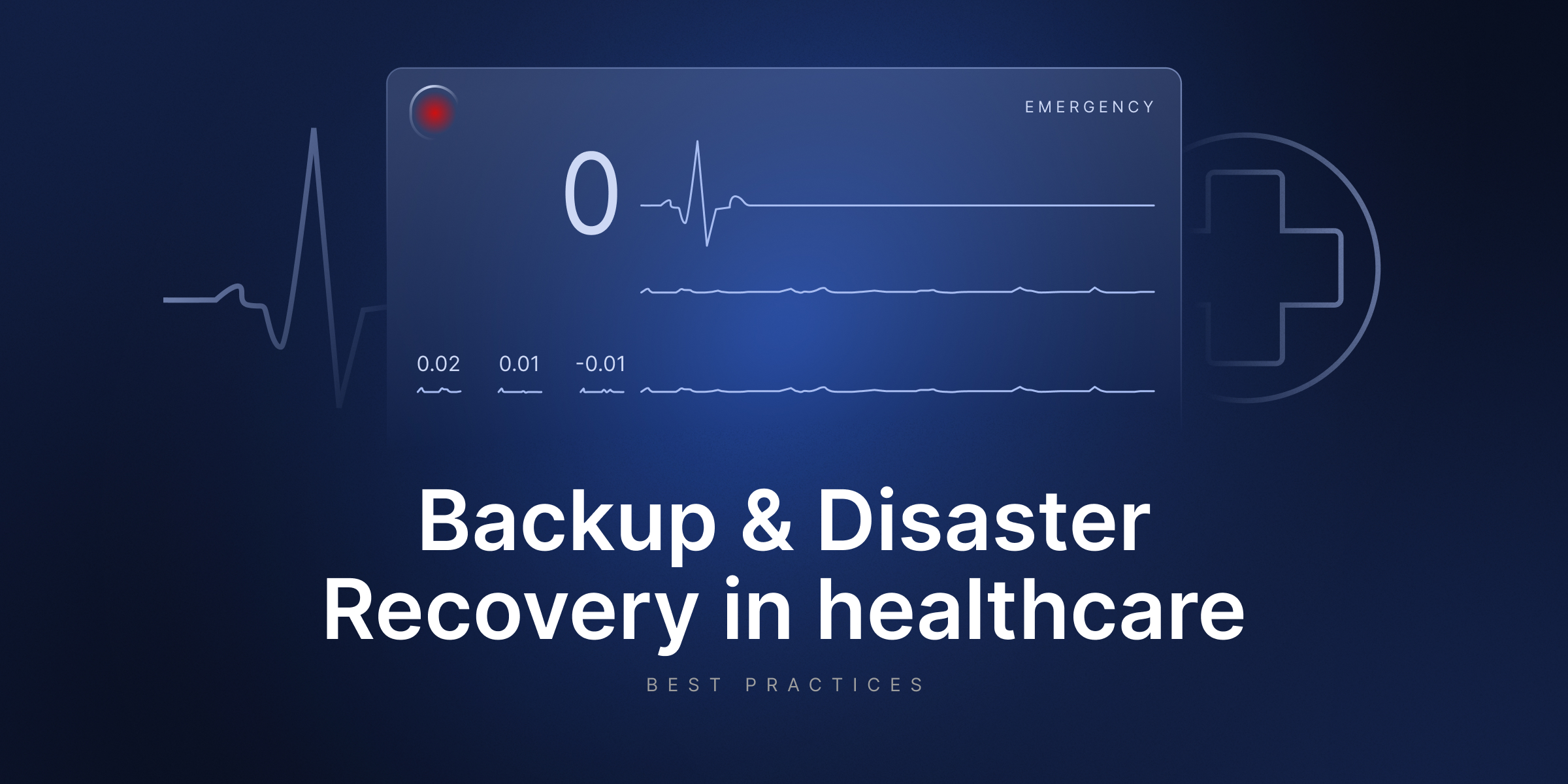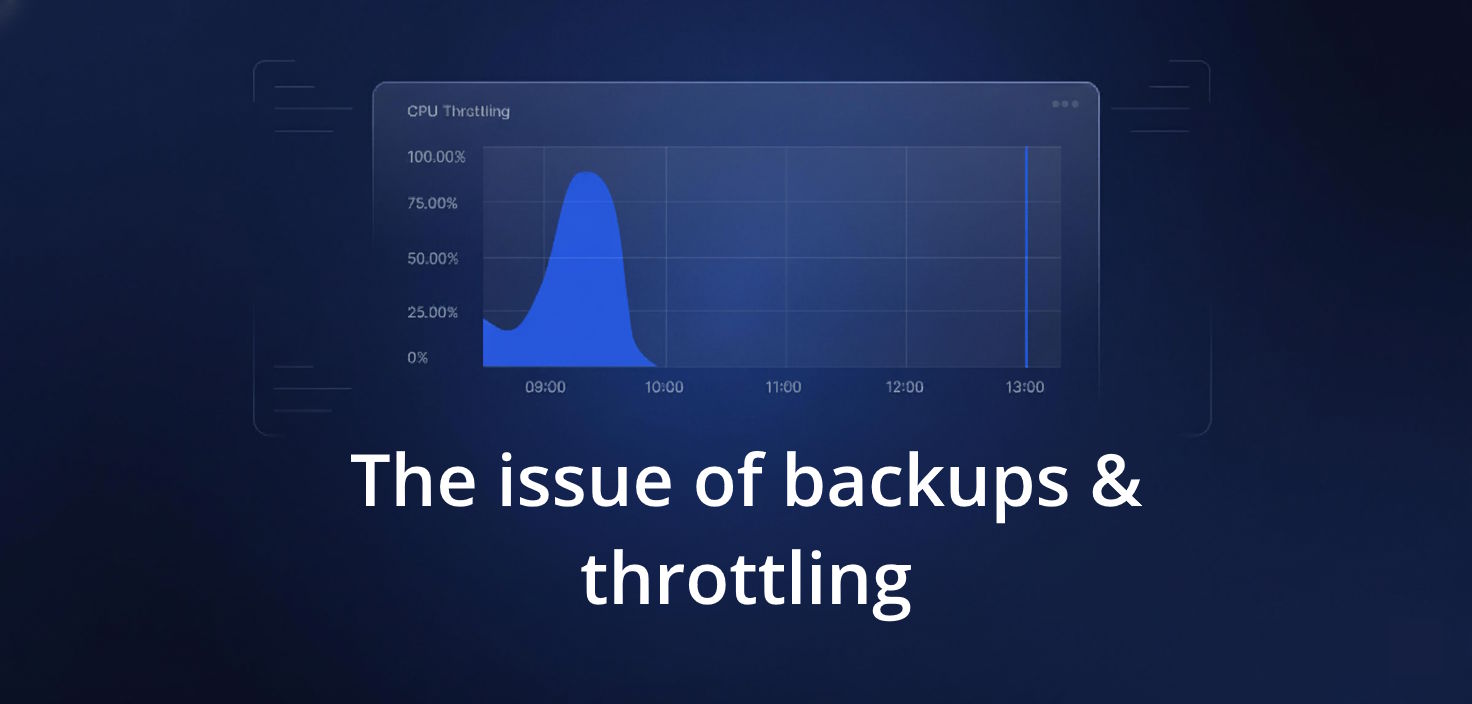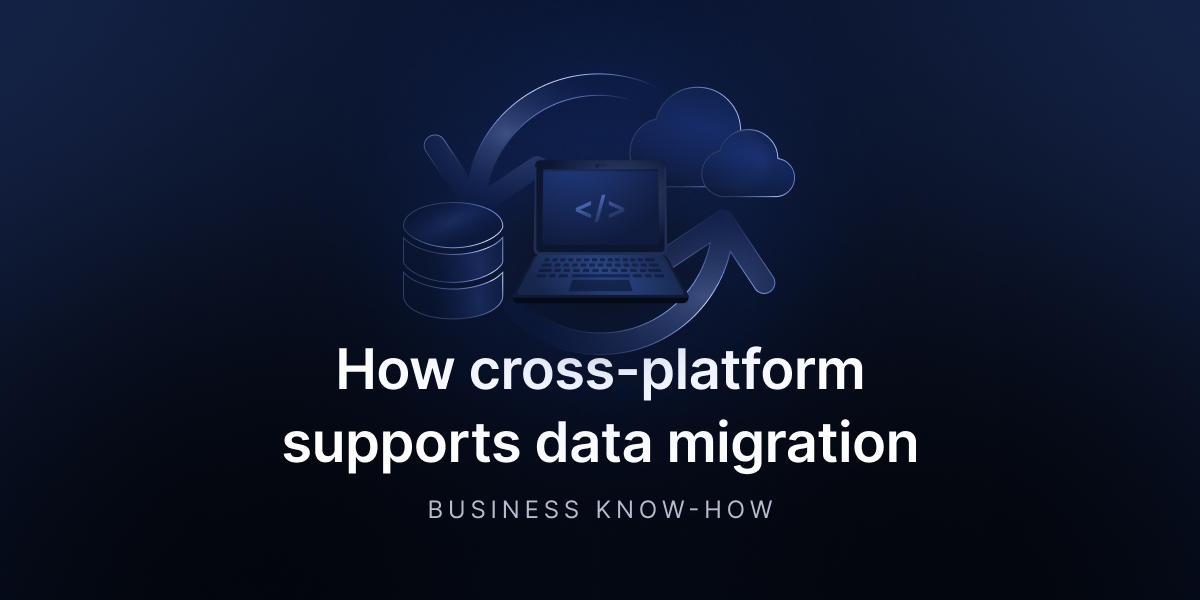
How To Build a HIPAA-Compliant Backup & Disaster Recovery Strategy
Backup solutions are key to security and data protection. For healthcare organizations, a reliable backup strategy not only enables rapid recovery after a disaster but also ensures operational resilience and helps maintain compliance with strict regulatory requirements like the Health Insurance Portability and Accountability Act (HIPAA).
There is no way around HIPAA rules — your organization either complies or suffers the consequences of data loss, along with fines and lawsuits that inevitably follow. Penalties for violating HIPAA regulations can go up to around $2M per violation.
To prevent data loss and operational disruptions, healthcare organizations should implement robust backup and disaster recovery strategies. These measures help minimize downtime, protect sensitive data, avoid regulatory penalties, and preserve the trust of patients, partners, and stakeholders.
DevOps gaps put the healthcare industry at greater risk
In 2024, numerous incidents led to data loss for companies in different industries. According to DevOps Threats Unwrapped, technology and software, fintech and banking, media and entertainment were among the top targeted industries. What about healthcare? Well, according to the HIPAA Journal, 2024 saw a slight year-to-year decrease in the number of reported data breaches:
“As of March 19, 2025, 734 large data breaches have been reported to OCR, a percentage decrease of 1.74% from the 747 large healthcare data breaches reported in 2023. While a reduction in healthcare data breaches is a step in the right direction, 2024 was the worst-ever year in terms of breached healthcare records, which jumped by 64.1% from last year’s record-breaking total to 276,775,457 breached records, or 81.38% of the 2024 population of the United States.”
Still, the healthcare industry saw 14 data breaches that involved 1+ million health records in 2024. The biggest one affected an estimated 190 million people. The ransomware, released by the BlackCat/ALPHV, accessed the Change Healthcare network and encrypted the files through compromised credentials of the portal without multifactor authentication. Before demanding a $22 million ransom, the cybercriminals exfiltrated and encrypted protected healthcare information (PHI). Due to the prolonged outage, the patients couldn’t obtain medications unless they paid for them themselves. Additionally, the system’s downtime was also negatively impacting the revenue streams of multiple small healthcare practices, forcing them to close.
A single point of failure pushed the U.S. healthcare system consolidation and health care providers into a corner. Had there been multifactor authentication and well-tested procedures to rapidly restore healthcare systems under a ransomware attack, the outcome would look different.
Microsoft 365 now accounts for 52% of healthcare email breaches (up from 43% in 2024), compromising over 1.6 million medical records with an average of 16,000 per breach and costing $11 million per incident.
“Cyberattacks and tech outages at provider organizations have reached an all-time high. To stem the tide, providers need strong plans to prevent, detect, and recover from attacks and disruptions… With inadequate investment, [however], many providers’ software, firmware, and hardware is at risk of becoming incompatible, fallible, insufficient, or obsolete.”
— Tech resilience for healthcare providers: Inaction has a heavy toll, McKinsey
What ties HIPAA to SaaS & DevOps?
HIPAA rules don’t explicitly reference DevOps because the DevOps pipelines are part of how healthcare organizations manage and operate their IT environments. DevOps teams use GitHub, GitLab, Bitbucket, Azure DevOps, Jira, or Microsoft 365 to interact with systems storing or processing electronic protected health information (ePHI).
Source code repositories, CI/CD pipelines, and cloud automation scripts may seem “indirect” at first glance. But they underpin the systems that manage patient data. A single outage, compromise, or ransomware infection in these tools can trigger the same compliance failures as a direct breach of patient records.
Under the HIPAA Security Rule, your healthcare organization must ensure the confidentiality, integrity, and availability of all data. HIPAA’s technical requirements must be enforced directly within SaaS environments as well, while shaping backup and recovery compliance obligations against data loss. If done right, health care providers can avoid many HIPAA violations. Now, where exactly does healthcare stumble?
HIPAA violations: mistakes keep repeating
Violations and failure to comply with HIPAA occur because different healthcare organizations across the board make the same compliance mistakes related to personal health information and other healthcare data. The nature of some missteps is found either directly or implicitly at the intersection of backups and data:
| Mistake | Implication |
| ❌ Poor backup & DR capabilities | ⚠️ Failing to operate during outages or when attackers compromise any given digital asset or system ⚠️ Poor DR plan testing under various hazards |
| ❌ Poor data handling | ⚠️ Using outdated software with unpatched vulnerabilities ⚠️ Relying only on passwords without additional security layers ⚠️Lack of data encryption |
| ❌ Unauthorized access | ⚠️ Using shared login credentials ⚠️ Granting excessive access privileges beyond an employee’s authorized actions ⚠️ Failing to monitor logs of medical records ⚠️ Not disabling former employees’ accounts |
| ❌ Improper disposal of data | ⚠️ Throwing away printed, individually identifiable health information without shredding ⚠️ Failing to erase electronic health records or copies of it from hard drives, USB devices, or old computers up for disposal ⚠️ Not having a policy for data disposal ⚠️ Using third-party disposal services without prior HIPAA verification |
| ❌ Belated reports on data breaches | ⚠️ Unless a case is an ongoing investigation, healthcare facilities are obliged to submit a notice about a breach within 60 days. |
| ❌ Lack of organization-wide risk analysis | Some crucial files and data need regular risk assessment: ⚠️ Physical files and electronic health records ⚠️Access controls and authentication measures ⚠️Third-party vendor compliance with HIPAA regulations ⚠️Vulnerabilities in cloud storage and digital infrastructures |
While some violations refer more to staff negligence and are harder to detect in regard to personally identifiable information, most of them can be eliminated if your organization keeps its security and backup & DR practices intact.
Checklist for HIPAA compliance
- Appoint or designate the roles of HIPAA Privacy and Security Officers
- Define how health information is created, received, stored, and transmitted
- Keep a detailed track of potential vulnerabilities and threats to PHI
- Implement additional policies and security measures as required
- Adapt your policies based on new regulatory or operational changes
- Secure facilities and restrict access to protected health information systems and medical records
- Monitor user activity across your systems and apps to spot PHI threats
- Provide staff training on HIPAA compliance and security awareness
- Configure systems to automatically detect, log, and report HIPAA security incidents
- Develop mechanisms for reporting HIPAA security incidents
- Develop incident management plans for each type of incident
- Regularly test the incident management plans and revise them regularly
- Develop procedures for receiving breach notifications and notifying all parties involved
- Implement a sanctions policy for any Privacy Rule standard violated
These are just a few key tasks that include many more peripheral points pertaining to the checklist. Thus, your job is never finished and is forever important! When mapping out a backup and DR plan, the tools you use should give you a blueprint for action in all possible circumstances.
Backup & recovery angle in HIPAA Security Rule
In the healthcare industry, covered entities and business associates must have clear policies and procedures in place to identify, respond to, and report anticipated threats or confirmed security incidents, as well as recover from them quickly.
Security incident procedures
Health Insurance Portability and Accountability Act compliance goes beyond detection. A covered entity is also expected to outline how it will contain an incident, minimize any damage, and document both the event and the actions taken to resolve it. In practice, this means building a structured incident response plan that not only meets HIPAA’s requirements but also strengthens your company’s overall resilience.
“Security Incident Procedures. A regulated entity must implement policies and procedures to address security incidents. It must identify and respond to suspected or known security incidents and mitigate, to the extent possible, harmful effects of known security incidents, and document security incidents and their outcomes.” — 45 CFR 164.308(a)(6) HIPAA
Contingency plan
Covered entities and business associates must implement a few non-negotiables: a data backup plan, a disaster recovery solution plan, and an emergency mode operation plan as part of their security policy. These required safeguards make sure that protected health information and critical systems remain accessible, even during a crisis.
“Contingency Plan. A regulated entity must establish and implement procedures for responding to emergencies or other occurrences that damage information systems that contain ePHI. 47 This includes establishing plans for backing up its ePHI, restoring any lost data, and continuing critical business processes for protecting the security of ePHI while operating in emergency mode.” — 48 HIPAA
Retention of healthcare information
The following HIPAA requirement enforces that all critical healthcare data should be kept in written or electronic form and retained for at least six years after they’re created or last updated by the covered entity.
“Maintain the policies and procedures provided for in subsection (9) above in written or electronic form…. Retain the documentation required by this paragraph for six years from the date of its creation or the date when it was last in effect, whichever is later.” — HIPAA M.10.a
Documented security procedures
This Health Insurance Portability and Accountability Act requirement means a covered entity must establish formal, documented administrative practices like audits, training, and security policies for how security measures are chosen and implemented. It also ensures personnel are trained and managed properly so that data protection isn’t just technical, but embedded in day-to-day operations like incident response and Disaster Recovery.
“Administrative procedures – documented, formal practices to manage the execution and selection of security measures to protect data and to manage the conduct of personnel to protect data, i.e. audits, training, disaster recovery.” — HIPAA 6.A
Health data needs unfailing backup solutions
To meet the security and compliance requirements above, you are to integrate a backup and recovery solution directly into your DevOps and project management environment. Thus, in case of an outage, ransomware attack, accidental deletion, or any other event of data loss, automated backups and a tested recovery process will let you contain incidents quickly, minimize disruption, and ensure your critical healthcare data is safe.
From ransomware attacks to accidental deletions, every security incident must be anticipated, documented, and mitigated. GitProtect maps directly into HIPAA rules and offers you a comprehensive backup and every-scenario-ready Disaster Recovery technology.
With GitProtect’s backup and Disaster Recovery software for DevOps tools, organizations can meet strict HIPAA Security Rule requirements for data protection and resilience. The solution offers frequent automated backups, your choice of deployment model (On-prem or Cloud), and flexible data residency options (EU, US, AUS, or custom). You also get long-term retention (up to unlimited), multi-storage compatibility with as many storage instances as needed (supporting the 3-2-1 backup rule), and data replication across storage instances. Add to that ransomware protection, easy backup monitoring, and advanced recovery options — from full and granular restores to point-in-time and cross-platform recovery — and you’re prepared for any disaster scenario.
Updates to the HIPAA Privacy Rule may be coming
The HIPAA Privacy Rule may undergo a series of revisions and changes once the US government administration decides to revisit the policy and further improve patient privacy safeguards. According to the HIPAA Journal, a few updates relate to:
- reducing the maximum access time to PHI to 15 days instead of 30
- testing the given security measures sufficiency every 12 months
- having data backups with separate technical controls for health records and all other e-systems dealing with health information
- developing written procedures for restoring data within 72 hours, including a restoration priority
- timely implementation of patches and software updates
- removing extraneous software from relevant electronic information systems and much more
Business continuity depends on resilient backup & DR plans
These are just a few examples of how HIPAA Privacy Rule changes can affect your healthcare organization and your backup & Disaster Recovery plan strategy. If the bill to change HIPAA regulation passes in the near future, your organization’s DevOps policies and procedures will require revision as well.
Secure your position as a trustworthy health care provider by mitigating external and internal risks linked to health information. Backup data can rescue your care delivery in any malfunction scenario and system failure.
[FREE TRIAL] Protect your critical data with GitProtect backups for GitHub, GitLab, Azure DevOps, Bitbucket, Jira, and Microsoft 365
[CUSTOM DEMO] Explore how backup & DR software for DevOps can help you protect your healthcare IT infrastructure and data integrity







